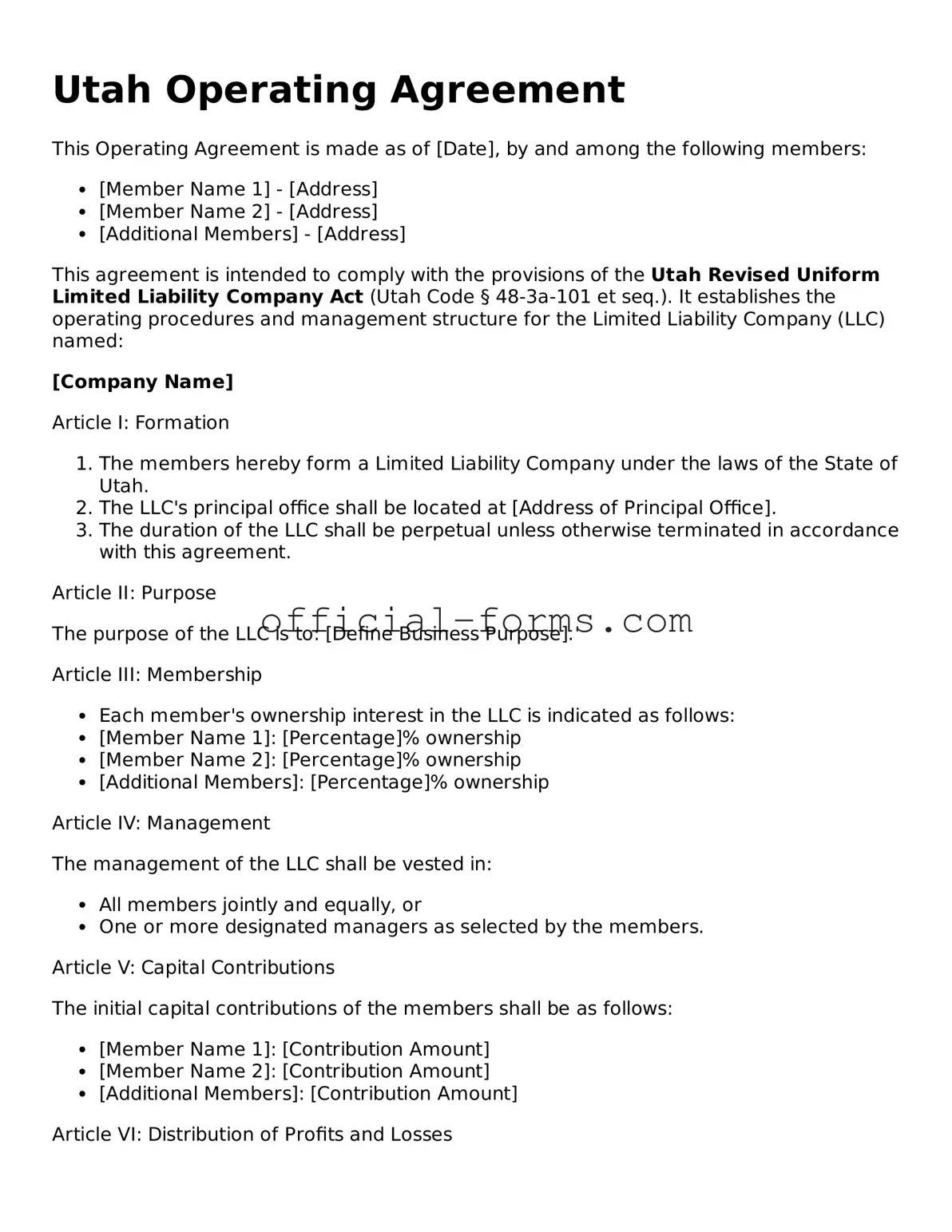When completing the Utah Operating Agreement form, many individuals make common mistakes that can lead to complications down the road. Understanding these pitfalls can help ensure that your agreement is both accurate and effective. Here are eight frequent errors to watch out for.
One common mistake is failing to clearly define the roles and responsibilities of each member. Without this clarity, misunderstandings can arise, leading to conflicts within the business. Each member should know their specific duties and contributions to avoid any confusion.
Another frequent error is neglecting to outline the decision-making process. This aspect is crucial for smooth operations. If the agreement does not specify how decisions are made—whether by majority vote, unanimous consent, or another method—disagreements may become problematic.
Some people also overlook the importance of including provisions for profit and loss distribution. This section should detail how profits and losses will be shared among members. Without this information, members may have different expectations, which can lead to disputes.
Additionally, individuals often forget to address the process for adding or removing members. As businesses grow and change, it’s essential to have a clear procedure in place. This clarity helps manage transitions smoothly and ensures that all members are on the same page.
Another mistake is not specifying the duration of the agreement. While many assume that the agreement is indefinite, it’s wise to state the intended duration explicitly. This can help prevent misunderstandings about the agreement’s validity over time.
Some individuals fail to include a dispute resolution process in their Operating Agreement. Having a clear method for resolving conflicts—whether through mediation, arbitration, or litigation—can save time and money in the event of a disagreement.
Moreover, many people neglect to update their Operating Agreement as circumstances change. As businesses evolve, it’s important to revisit and revise the agreement to reflect new realities. Regular updates ensure that the document remains relevant and effective.
Finally, some individuals rush through the signing process. All members should carefully review the agreement before signing. Taking the time to ensure that everyone understands and agrees to the terms can prevent future issues and foster a sense of teamwork.
